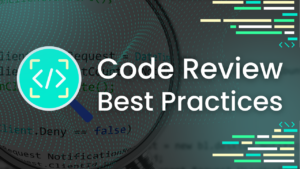Axosoft Founder, Hamid Shojaee was recently featured on the LIVE stream podcast Documentation Not Included (DNI), hosted by Josey Howarth, Patryk Kowalik, and Chris Sebok. The show covers topics like web development, process workflows, enterprise architecture, game development, DevOps, and more.
In this episode, ‘Have App Idea, ???, Profit!’ Hamid and the hosts discuss building a product and all that entails, from early adoption to MVPs and more.
We’ve summarized some of the top points below or you can watch the recording.
Watch this quick video or keep reading to learn more!
Project Management Fundamentals
“Project management is something that is critical and significantly undervalued in development now, especially game development,” points out Patryk. “I’ve seen many companies crash and burn because of atrocious project development.”
“In essence, bureaucracy gets in the way of the doing,” agrees Chris.
Hamid, creator of Axosoft, the Scrum project management software, and VP of Product for GitKraken Glo Boards for task tracking, talks about focusing on the fundamentals of project management.
“People often make project management more complicated than it needs to be,” says Hamid.
While project management in its simplest form could be as straightforward as a written list of tasks, it can become more complicated when you need to share those tasks between team members, particularly when it comes to software development.
Disrupting an Established Market
One of the questions posed to Hamid by the hosts was how to judge the worth of an idea.
“Consider some of the world’s most successful companies, like Google,” says Hamid. “None of them knew what their markets were worth; none of them.”
And markets with known value are saturated with established players.
Now what about disruptive technology? Products that are able to disrupt established markets.
“Disruptive technology is disruptive because no one has done it before,” explains Hamid. “It’s also very hard to accomplish.”
Products don’t have to be disruptive on a global scale, but they should be disruptive to your customer base.
Why do so many ideas fail?
With such a high failure rate for startups, sometimes it can seem hopeless for budding entrepreneurs. But fear not says Hamid:
“We have a much higher view of our prediction ability because we’ve seemingly predicted so many failures. But in reality, you essentially have a 95% accuracy rate by thinking everything is going to fail.”
Don’t let it stop you.
“If you’re going to make things, you’re going to fail. Just learn how to fail forward,” encourages Patryk.
Product Conception
Most ideas come from having a need for a specific tool, Josey points out. Which is exactly how Hamid got his start. He needed a tool that kept track of who was working on what.
“I basically needed to share my spreadsheet. Google Docs and Sheets were not available at the time; had they been, I may never have created Axosoft.”
Having insight into how to solve problems is key to success in any product category. If you are not the user, you must have an example of a user to understand what the problems are that need to be solved.
“We live in a world where your idea probably isn’t going to be revolutionary. You’re going to have a competitor.”
It’s really difficult to judge whether your idea is better, and it’s even harder for you, as the creator or founder, to judge it without bias. Ultimately, the market decides.
User Adoption
User Adoption can come in a variety of ways, and in many cases, can be a more important metric than revenue, especially in the early stages of a software company.
So, do you give your product away for free?
“If people aren’t going to pay for your product, you have a few options,” says Hamid.
Would you rather users use your product for free and potentially grow into a paid customer down the line (or refer someone who does), or they don’t use your product at all and then use a competitor, who in turn receives those aforementioned benefits?
The Expense of Supporting Free Users
That all sounds well and good, but how do you justify paying for developers to support all of these free users? Does that allocation of resources ever trump the benefits?
“When you’re using a product for free, you typically don’t expect the same level of support as you would if you were paying for the product,” points out Hamid.
Josey goes on to share her experience of releasing a product:
“The early adopters, and likely free users, will be the ones who will have the greatest influence on your product. They can feed you the information you will need to create a lasting, sustainable product.”
Pricing
Now, when you’re ready to start charging your users…
“You can always raise the price, but it’s much harder to lower it,” explains Hamid.
This can also help encourage early adoption. But keep in mind, “there will always be people who will be upset when you raise prices.”
MVPs
An MVP, or minimum viable product, also known by some as RAT, riskiest assumption test, stresses the impact of adapting during product development.
“MVP conceptually is a good idea,” says Hamid. “Doing highest risk things first and accomplishing the things you’re assuming you can accomplish. This is the right way to build a product.”
He goes on to note, however, that an MVP shouldn’t really be something that is just usable, it should be the minimum viable product that your customer would accept over all of the other options already available. Those are the additional qualifiers needed.
It’s really the minimally superior product. It has to be superior to what already exists in the market.
Hamid in Space?
Now, the important stuff. Would Hamid go with aliens if they came to Earth and asked him to return to space? “Oh yeah…after asking a few qualifying questions, of course.”
Thank you Josey, Patryk, and Chris for having Hamid on DNI!


 GitKraken MCP
GitKraken MCP GitKraken Insights
GitKraken Insights Dev Team Automations
Dev Team Automations AI & Security Controls
AI & Security Controls





